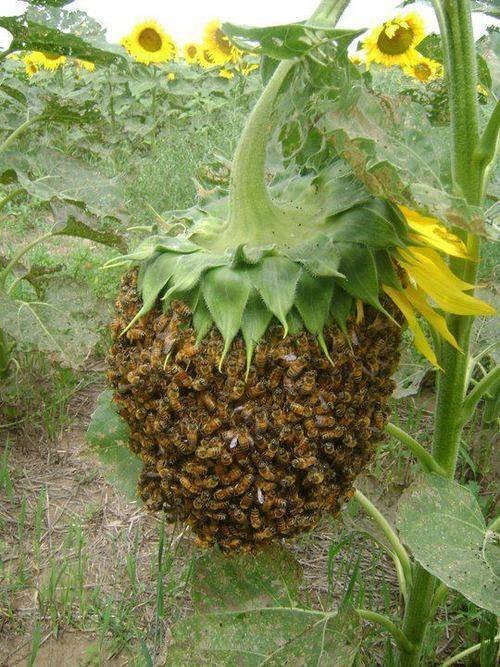Swarming honey bee colony
Observe how the swarming colony tries to encapsulate the queen honey bee (pointed out with the key). Meanwhile, scouts look for suitable nests. At the moment, there was at least another swarming colony in a tree. Both these colonies don't have a free beehive in the apiary. to nest. Natural nests are natural or artificial cavities or are hanging and exposed. These colonies will have low honey storage capacity. After working all summer, they will manage to build some combs and stockpile them with honey. But as the cold season arrives, they will deplete all their food resources and perish.
What is a beehive? What is the difference between a beehive and a bee nest?
A hive is an artificial, man-made structure that houses a honey bee nest. It's internal structure is a densely packed group of hexagonal prismatic cells made of beeswax, called a honeycomb. The bees use the cells to store food (honey and pollen) and to house the brood (eggs, larvae, and pupae). Several species of Apis live in colonies, but for honey production the western honey bee (Apis mellifera) and the eastern honey bee (Apis cerana) are the main species kept in hives.
Why would a colony swarm?
"(...) honeybees reproduce by swarming, when the old queen and a majority of the workers leave the nest to seek a new site. (...) the developing queen larvae are left behind and soon emerge as adults to fight other unmated queens to the death until only one is left. Then, the last virgin standing leaves the hive to mate, copulating with ten to twenty male drone bees that catch the queen and then die following their aerial tryst. The mated queen returns to the nest and begins laying eggs within a few days, reestablishing order in the colony." - Mark L. Winston, Bee Time - Lessons from the hive

Swarming colony on a sunflower

www.drapis.com
@drapis
Twitter @drapiscom // Facebook @drapiscom // Instagram @dr.apis